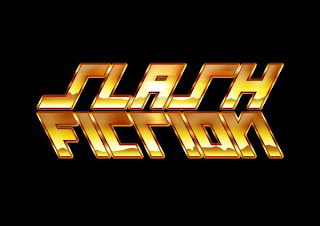
Gaga has exploded into Pop dominance in less than three years. She, like Madonna before her, got her start in the gay community and dance clubs of New York City. And, also like The Material Girl, she gained notoriety in the punk scene (Madonna got her start playing drums in a punk band), or at the very least, incorporated the punk aesthetic into her act. Gaga's persona was also instantly identified as part of the queer community. When she first gained notice, many jokes and comments were made insinuating she was a dude and has a dick (this is referenced in the video for Telephone where she's strip searched and one butch female guard says to another, "I told you she didn't have a dick.")
Gaga seems to be the living embodiment of Fuchs Queer Punk prophecy, only also heavily influenced by Pop Art and Warhol.
Punks and Queers, these social deviants/marginalized citizens of mainstream society, have always managed to make their presence known by defying the status quo and subverting the everyday through their art. They deny the existence of the "mainstream", seeing it as having no more relevance than the subculture. Members of countercultures pride themselves on their individuality and refusal to accept the trappings of society, and strive against the commercializtion of their ideals. The rebels, the unpopular cast-offs and hooligans, renounce the need for acceptance and stand against categorization and standardization.
Gaga, however, represents a new movement that is breaking this tradition. The avant-pop movement defies the usual platform of subcultures because it has always desired commodification. Gaga and her Little Monsters of today's youth have grown out of a mass media saturated society. Rather than yearning for the destruction of the mainstream it seeks to use the elements of conventional society to create a newly altered yet still marketable reality, one that exists on the outside of the mainstream but is fed from within.
The role of a subculture is to subvert the mainstream. Punk culture took what they saw in the mainstream world, the resources and commodities available to them, and reimagining them in a way that was meant to shock and outrage the powers that be (as well as allowing the artists to purge and vent their frustrations). Once a subculture is picked up byt the matinstream, the dominating force will attempt to understand the new materials and realities created by making them seem more relatable to the average citizen. At this point the subculture loses its charm, its resistance to commodification has been superceded by the dominant's way's need to commercialize in order to understand.
This new wave of pop artists long to be exploited. The participants in the avant-pop culture were raised in a mass media created and directed reality. Therefore, rather than eschew the accompaniments of the conventional, tney instead embrace them, they take what they see and attach new meanings as the punks did but they do it in a way that screams for attention. No one witin the movement wants to hide from the mainstream world. Tney want i tinfiltrate it and use its own mechanism against it.
Lady Gaga emerged as the the flag bearer for avant-pop. Her first single, Just Dance, debuted at the top of the Billboard Chart, followed by five consecutive hit singles and a famous performance on the MTV awards, where she dressed like a cross between the Phantom of the Opera and a lingerie model and screamed and bled all over the place. Her success seemingly came out of nowhere but in fact the cultural storm she rode in on had been brewing long before the young star put on her first pair of stilettos. The mixture of synthesized dance beats with catchy rhythms, the bastions of pop music, combined with her bizarrely explicit lyrics and art-damaged Euro fashion sense was exactly the cocktail needed to propel the avant-pop world into the spotlight it had alway slonged for. Her predecessors of successful yet strange/queer pop stars include Bjork, Cyndi Lauper, David Bowie, Yoko Ono, and the group Queen, for who she's named after (the song Radio Gaga). She set out to become the "pop star for misfits and outcasts", encouraging her following of "Little Monsters" to be themselves at all times, damn what society may say. Gaga also has a hand in every aspect of production, from concept to costume, overseeing everythingin her her Warhol's Factory-inspired Haus of Ga. She attempts to beautify the grotesque, carrying on the queer, punk, avant-pop aesthetics with a heavy dose of performance art.
Fuchs mentions that queer visibility is "less a loss of authentic marginality than an invasion and expansion of the mainstream. Punk emulates a kind of acting out and giving in, simulating resistance to exacerbate lingusitic and generic instabilities, acting out and acting up to kick listeners into gear. Transforming the mainstream-injecting it with good music, no less- queer punk translates experience into performance and vice versa, collapsing expression onto identity, fiction onto productive politics."
The commodification of subcultures will continue as long as there is a battle between the popular and the marginalized. Those in control of the mainstream will always try to understand the fringe, and will especially always try to make money off of it. Once commercialized, many subcultures simply fade out, as the unification of outsiderdom no longer applies and the members of the groups become what they were initially fighing against. The avant-pop movement, breaking through in today's world with stars like Gaga, is ulike others because it not only seeks but thrives on popular commercialization. The more the pop culture machine pushes the avant-pop movement towards standardization, the more fuel the artists and fans have for their fire. This is one subculture that seems to resist the death sentence that is commodification and will continue to resist as the media and the world it creates changes with the times.



















